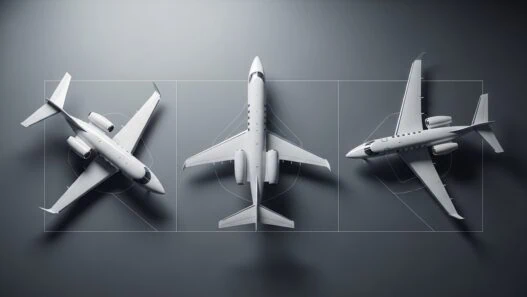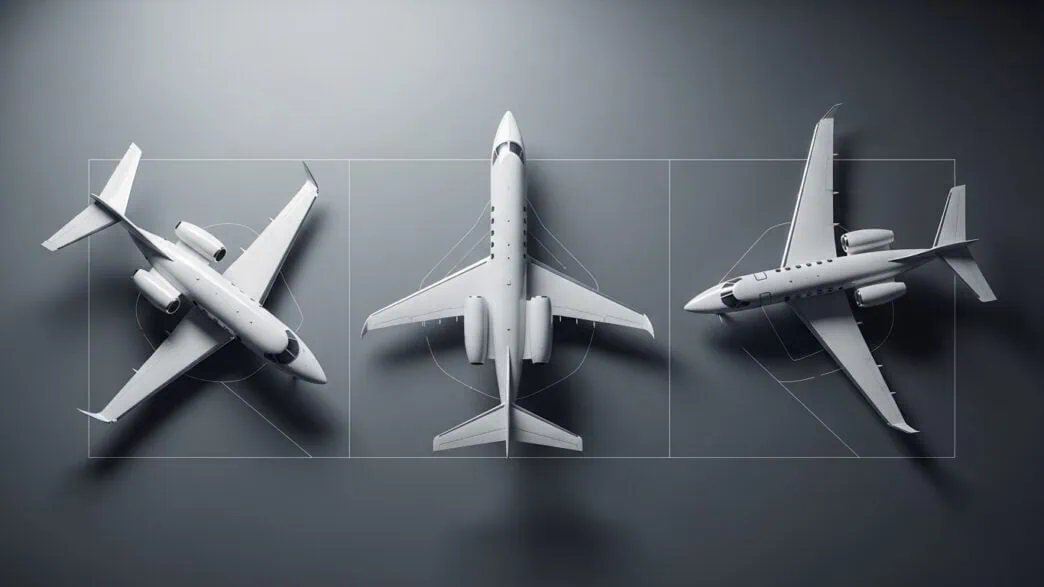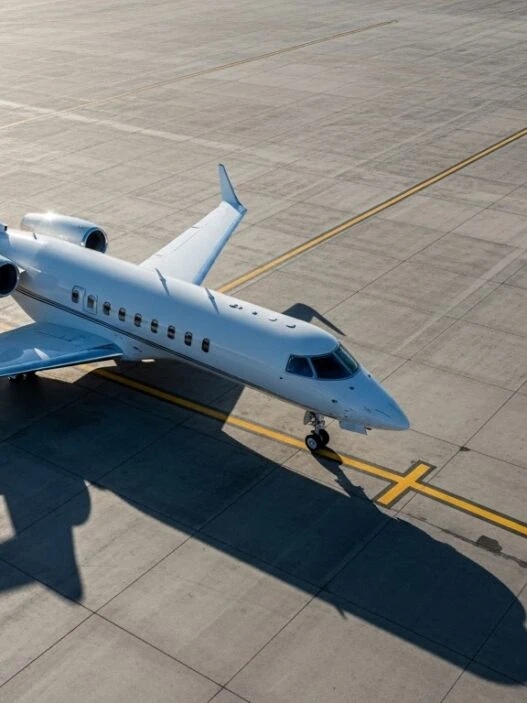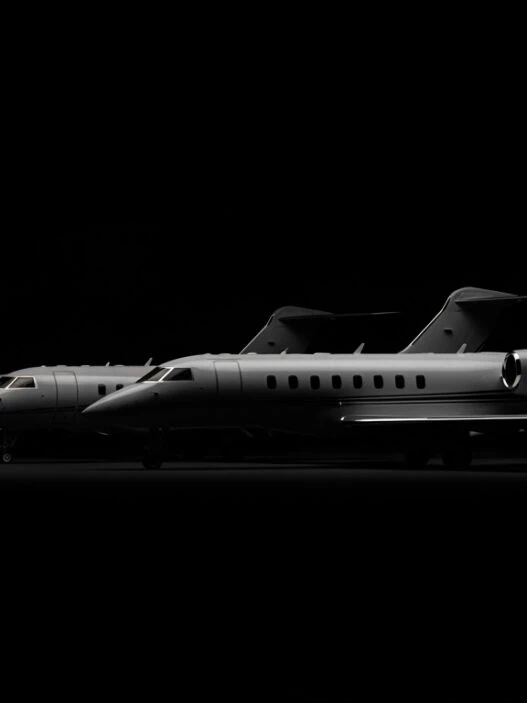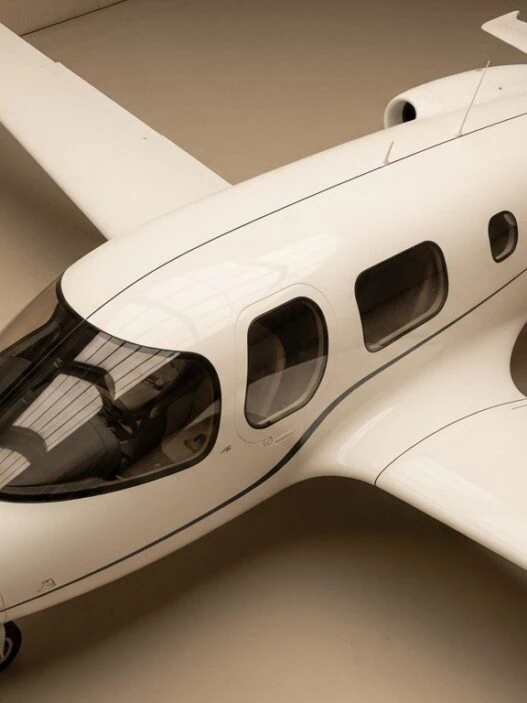Private jet cost varies dramatically based on usage patterns, aircraft type, and ownership model, ranging from $3,000 per hour for charter flights to millions annually for ownership. Understanding true private jet cost requires analyzing charter rates, membership programs, and ownership expenses across different usage scenarios to determine the most cost-effective approach for your travel needs.
This comprehensive private jet cost calculator and analysis examines 2025 pricing data across all aviation options, from on-demand charter to fractional ownership. Whether you fly 25 hours or 250 hours annually, the private jet cost differences between charter, membership, and ownership can reach hundreds of thousands of dollars per year.
The private jet cost landscape has evolved significantly, with new membership programs, improved charter availability, and innovative ownership structures creating more options for frequent travelers. Understanding which approach delivers optimal value requires detailed analysis of your specific travel patterns and cost priorities.
Interactive Private Jet Cost Calculator
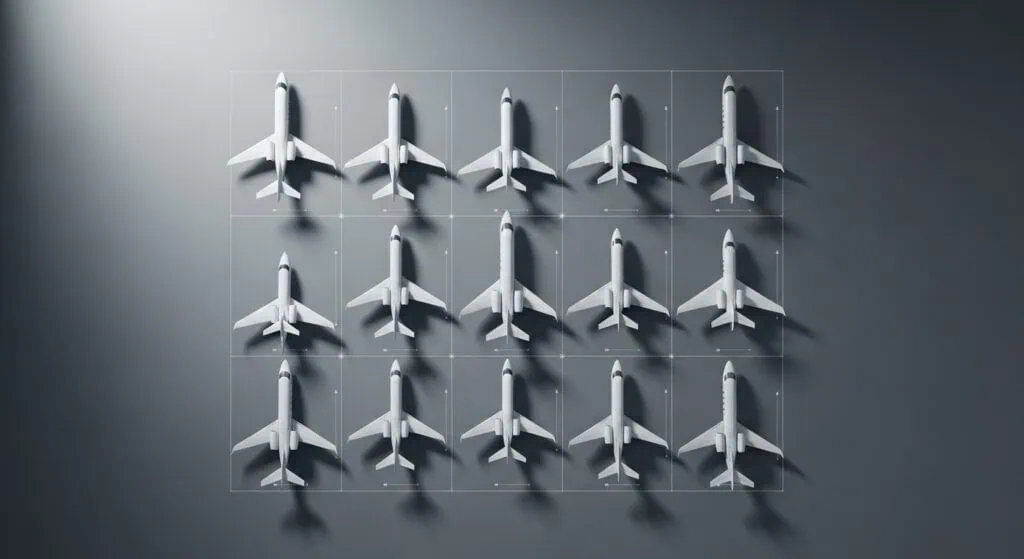
Quick Cost Estimator
Annual Flight Hours: [Input: 25-500 hours] Typical Passengers: [Input: 2-8 passengers] Route Type: [Dropdown: Domestic/International/Mixed] Aircraft Preference: [Dropdown: Light Jet/Midsize/Heavy Jet]
Estimated Annual Costs:
Charter Option:
- Light Jet: $260,000 – $2,600,000 (50-500 hours)
- Midsize Jet: $390,000 – $3,900,000 (50-500 hours)
- Heavy Jet: $650,000 – $6,500,000 (50-500 hours)
Membership Option:
- Entry Level: $95,500 – $487,500 (Wheels Up model)
- Premium: $238,500 – $994,500 (NetJets fractional)
- Global: $610,000 – $1,030,000 (VistaJet program)
Ownership Option:
- Light Jet: $850,000 – $1,200,000 annually
- Midsize Jet: $1,400,000 – $2,100,000 annually
- Heavy Jet: $2,500,000 – $4,200,000 annually
Calculator results based on 2025 market rates. Actual private jet cost may vary based on specific aircraft, routing, and seasonal demand.
According to industry data from the National Business Aviation Association, these private jet cost ranges reflect current market conditions and operator pricing strategies.
Private Jet Charter Costs 2025
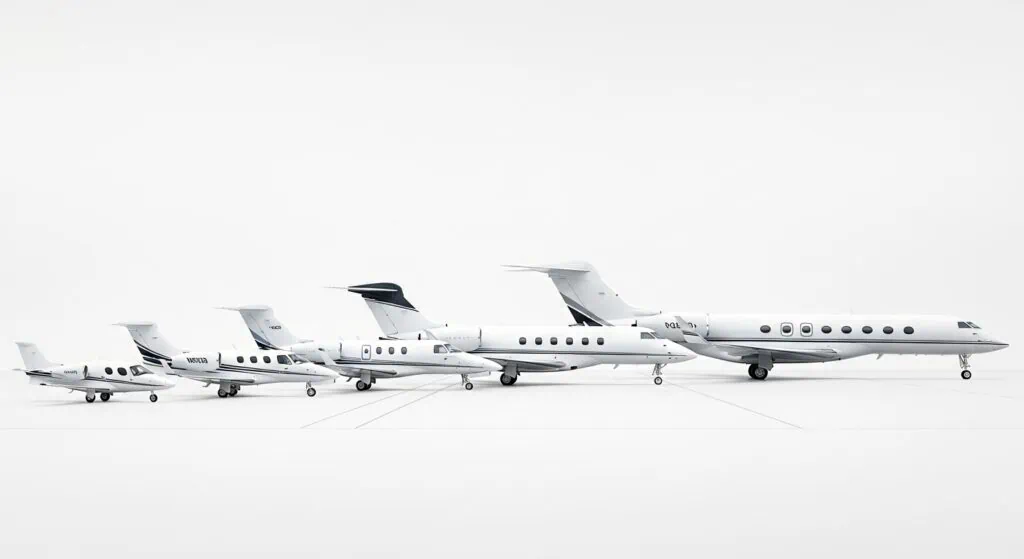
Private jet cost for charter operations varies significantly by aircraft category, route distance, and seasonal demand. Charter remains the most accessible option for occasional travelers while offering flexibility without long-term commitments.
Hourly Charter Rates by Aircraft Type
| Aircraft Category | Hourly Rate | Typical Capacity | Range |
|---|---|---|---|
| Very Light Jets | $3,000-$4,500 | 4-6 passengers | 1,200 miles |
| Light Jets | $4,500-$6,500 | 6-8 passengers | 1,800 miles |
| Midsize Jets | $6,500-$9,500 | 8-9 passengers | 2,500 miles |
| Super Midsize | $8,500-$12,500 | 9-12 passengers | 3,500 miles |
| Heavy Jets | $12,500-$18,000 | 12-16 passengers | 5,000+ miles |
| Ultra Long Range | $16,000-$25,000 | 14-19 passengers | 7,500+ miles |
Pricing data compiled from Aircraft Cost Calculator, JETNET iQ market intelligence, and verified through National Business Aviation Association cost studies. Rates reflect Q4 2024 market conditions.
Additional Charter Fees
Federal Excise Tax: 7.5% of base charter cost applies to all domestic flights, adding significant expense to private jet cost calculations. This federal tax, mandated by 26 USC Section 4261, can add $15,000-$50,000 annually for frequent charter users according to IRS Federal Excise Tax guidelines.
Positioning Fees: Aircraft repositioning costs range from $2,000-$8,000 depending on distance when aircraft must travel to pickup location. Conklin & de Decker aviation consulting reports positioning fees impact 65% of charter flights, significantly affecting total trip costs.
International Fees: Customs, handling, and overflight fees add $3,000-$12,000 to international charter costs. European flights incur particularly high fees, with EUROCONTROL route charges adding substantial costs for transcontinental routes.
Peak Season Surcharges: Holiday periods and high-demand travel windows increase rates by 25-50% above standard pricing. JETNET iQ market intelligence reports December holiday periods can double charter costs for popular routes.
Catering and Ground Transportation: Premium catering costs $150-$500 per passenger, while ground transportation arrangements add $200-$800 per trip. These costs vary significantly by location, with Aircraft Owners and Pilots Association cost studies documenting wide regional variations.
Charter private jet cost benefits include no upfront commitments, aircraft variety selection, and operational flexibility. However, rates increase during peak periods and positioning fees can substantially impact total trip costs.
Major charter operators include NetJets, Flexjet, VistaJet, and thousands of smaller operators worldwide. According to Aviation International News market analysis, charter market pricing remains competitive due to increased operator capacity and improved booking platforms. The National Business Aviation Association reports over 5,000 charter operators in North America alone, creating competitive pressure on pricing.
Membership Program Costs
Private jet cost through membership programs offers predictable pricing with guaranteed availability, targeting frequent travelers seeking charter flexibility without ownership complexity. These programs require annual commitments but provide consistent rates and priority access.
Wheels Up Membership Model
Annual Membership: $17,500 Annual Minimum: $78,000 in flight costs Light Jet Rate: $6,500 per hour Total Annual Cost: $338,500 for 40 hours light jet usage
Pricing verified through Wheels Up official membership programs and SEC filings Form 10-K as of December 2024.
Wheels Up targets cost-conscious frequent flyers with transparent pricing and no peak surcharges. Their membership model provides 8-hour guaranteed availability and simplified booking through mobile applications.
NetJets Fractional Ownership
Initial Investment: $850,000 minimum for 1/8 share (100 hours) Management Fees: $144,000 annually Light Jet Operating Cost: Included in share price Total Annual Cost: $994,500 for 100 hours guaranteed access
Pricing confirmed through NetJets investor relations SEC filings and NetJets official fractional ownership programs current rate cards.
NetJets fractional ownership provides aircraft asset ownership with guaranteed availability and premium service levels. The model suits high-frequency travelers prioritizing consistency and reliability.
VistaJet Global Program
Annual Minimum: $130,000 commitment Light Jet Rate: $12,000 per hour International Coverage: Worldwide operations included Total Annual Cost: $610,000 for 40 hours light jet usage
Rates verified through VistaJet official program documentation and financial disclosures in annual reports filed with Malta Financial Services Authority.
VistaJet emphasizes international travel with consistent global service standards and included international fees. Higher hourly rates reflect comprehensive worldwide coverage and luxury service levels.
For detailed analysis of membership options, explore our comprehensive private jet membership programs guide and NetJets vs VistaJet comparison.
Membership private jet cost structures provide predictability and availability guarantees but require substantial annual commitments regardless of actual flight activity.
Private Jet Ownership Costs
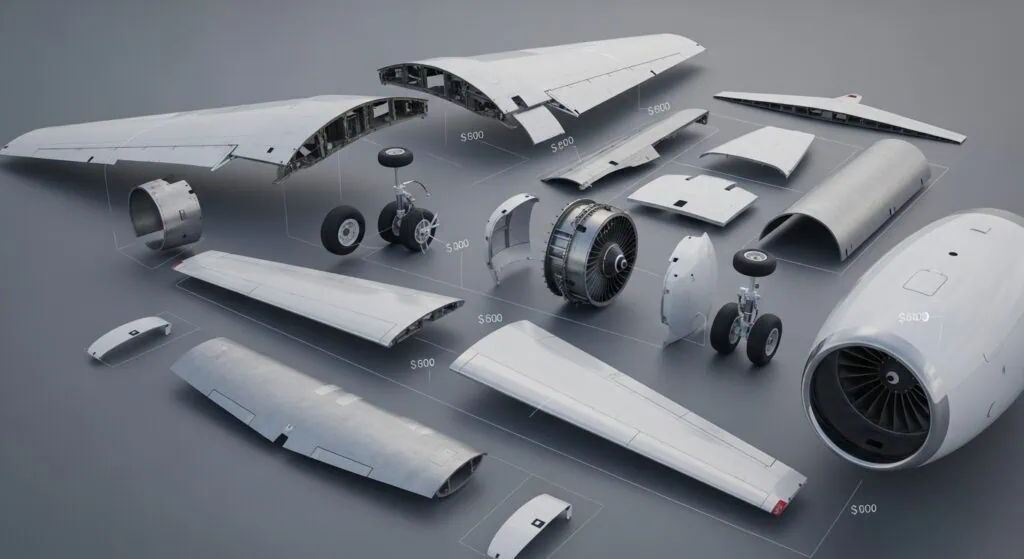
Private jet cost for ownership includes aircraft purchase, operating expenses, and ongoing maintenance creating substantial annual financial commitments. Ownership provides maximum flexibility and control but requires significant capital investment and operational management.
Aircraft purchase prices have appreciated 8-12% annually since 2020 according to Vref Aircraft Value Reference market data, driven by supply constraints and increased demand. Gulfstream Aerospace reports 18-month delivery delays for new G650 orders, reflecting tight supply conditions affecting private jet cost economics.
The Federal Aviation Administration requires extensive maintenance compliance for privately owned aircraft, with inspection costs rising 15% annually according to Conklin & de Decker cost analysis. Annual inspection requirements alone can cost $150,000-$500,000 depending on aircraft complexity and age.
Aircraft Purchase Prices
Light Jets: $3 million – $12 million
- Citation CJ3+: $8.5 million (Textron Aviation official pricing)
- Embraer Phenom 300: $9.5 million (Embraer commercial aviation)
- HondaJet Elite: $5.5 million (Honda Aircraft Company)
Midsize Jets: $12 million – $28 million
- Citation Latitude: $18 million (Textron Aviation pricing)
- Learjet 75: $14 million (Bombardier business jets)
- Challenger 350: $26 million (Bombardier official pricing)
Heavy Jets: $25 million – $75 million
- Gulfstream G650: $70 million (Gulfstream Aerospace)
- Global 7500: $75 million (Bombardier Global series)
- Falcon 8X: $58 million (Dassault Falcon)
Aircraft pricing verified through manufacturer official price lists, Aircraft Cost Calculator industry database, and Vref Aircraft Value Reference market valuations as of January 2025.
Annual Operating Costs
Fixed Costs (regardless of usage):
- Hangar rental: $50,000 – $200,000 (Aircraft Owners and Pilots Association cost studies)
- Insurance: $75,000 – $300,000 (Aviation Insurance Association market data)
- Annual inspection: $150,000 – $500,000 (Federal Aviation Administration Part 91 requirements)
- Crew salaries: $200,000 – $600,000 (Bureau of Labor Statistics aviation wages)
- Management company: $100,000 – $400,000 (National Business Aviation Association survey)
Variable Costs (per flight hour):
- Fuel: $2,000 – $5,000 per hour (Energy Information Administration jet fuel pricing)
- Maintenance: $1,500 – $4,000 per hour (Aircraft Cost Calculator verified rates)
- Crew expenses: $500 – $1,500 per hour (Department of Transportation per diem rates)
Total Annual Ownership Costs:
- Light Jet: $850,000 – $1,200,000
- Midsize Jet: $1,400,000 – $2,100,000
- Heavy Jet: $2,500,000 – $4,200,000
Operating cost data verified through NBAA Business Aviation Fact Book, Conklin & de Decker aircraft cost analysis, and operator financial disclosures.
Depreciation Considerations
Aircraft depreciation averages 5-8% annually for new aircraft, accelerating for older models according to Aircraft Cost Calculator market analysis. Light jets retain value better than heavy jets due to broader market appeal and lower operating complexity.
Tax Benefits: Section 179 depreciation allows immediate deduction of aircraft purchase price up to $1.16 million for business use, according to Internal Revenue Service Publication 946. Bonus depreciation provides additional tax advantages for qualified business aircraft under IRS Section 168(k). The National Aircraft Finance Association reports these tax benefits can reduce effective aircraft costs by 15-25% for qualifying business users.
Ownership private jet cost economics improve with high utilization (400+ hours annually) when fixed costs spread across more flight hours. However, ownership requires substantial capital commitment and operational expertise, with Business Jet Traveler studies showing average owner commitment exceeding $2 million annually including depreciation.
Industry analysis from Business Jet Traveler indicates ownership costs continue rising due to increased regulatory requirements, fuel prices, and maintenance complexity.
Break-Even Analysis by Usage

Private jet cost optimization depends primarily on annual flight hours, with clear break-even points determining the most economical approach for different usage patterns. Conklin & de Decker financial analysis shows these break-even points have shifted due to increased operating costs and membership program changes.
Under 50 Hours Annually: Charter Wins
For light users flying 25-50 hours annually, charter provides the most cost-effective solution according to NBAA cost studies. Total private jet cost ranges from $112,500 to $325,000 annually using light to midsize aircraft.
The Aircraft Owners and Pilots Association analysis confirms charter economics favor occasional users, particularly when factoring positioning costs and peak season availability. JETNET iQ market data shows charter utilization averaging 45 hours annually per customer, supporting this usage pattern.
Charter Benefits:
- No upfront commitments or deposits
- Aircraft type flexibility per trip
- No fixed annual costs
- Operational simplicity
Charter Drawbacks:
- Higher hourly rates than membership programs
- Peak season surcharges
- Limited availability during high-demand periods
- Positioning fees for remote locations
50-150 Hours: Membership Programs Competitive
Membership programs become cost-competitive for moderate users flying 50-150 hours annually. Private jet cost through programs like Wheels Up ranges from $325,000 to $975,000 annually.
Membership Advantages:
- Guaranteed availability with advance notice
- Consistent pricing throughout the year
- Priority access during peak periods
- Simplified booking and payment
Membership Considerations:
- Annual minimum spending requirements
- Limited aircraft type flexibility
- Multi-year contract commitments
- Additional fees for international travel
150+ Hours: Fractional Ownership
High-frequency users flying 150+ hours annually benefit most from fractional ownership programs. NetJets and similar providers offer guaranteed access with predictable annual costs ranging from $994,500 to $2,400,000.
Ownership Benefits:
- Guaranteed aircraft availability
- Asset ownership with resale value
- Premium service levels
- Operational control and customization
Ownership Challenges:
- Substantial upfront investment
- Long-term contract commitments
- Limited exit flexibility
- Management complexity
400+ Hours: Full Ownership
Ultra-high users flying 400+ hours annually should consider full aircraft ownership. Private jet cost for ownership becomes competitive when fixed costs spread across high utilization.
Full Ownership Advantages:
- Complete operational control
- Maximum customization capability
- Tax benefits and depreciation
- No hourly limitations
Ownership Requirements:
- Multi-million dollar capital investment
- Operational management capability
- Insurance and regulatory compliance
- Ongoing maintenance coordination
The break-even analysis assumes light jet usage patterns. Midsize and heavy jet users may find ownership attractive at lower utilization levels due to higher charter rates and membership costs for larger aircraft.
Hidden Costs and Fees
Private jet cost calculations must include numerous additional fees beyond advertised hourly rates or membership prices. These hidden costs can substantially impact total annual aviation expenses, with Aviation International News reporting actual costs exceeding quoted rates by 15-25% on average.
Federal and International Taxes
Federal Excise Tax (FET): 7.5% applies to all domestic charter flights, membership usage, and fractional ownership operations according to IRS Federal Excise Tax regulations. This tax alone can add $25,000-$100,000+ annually to private jet cost for frequent users, as documented in Conklin & de Decker cost analysis.
International Fees: Customs clearance, handling fees, and overflight charges range from $3,000-$12,000 per international trip. European flights incur particularly high fees due to multiple country overflights, with EUROCONTROL publishing detailed fee structures that can add $5,000-$8,000 per transatlantic flight.
Fuel Taxes: Vary by location but generally included in quoted hourly rates according to Energy Information Administration data. International fuel taxes may be charged separately, particularly in high-tax jurisdictions like Norway and the UK.
Operational Surcharges
Peak Day Premiums: Charter rates increase 25-50% during holidays, major events, and high-demand travel periods. Membership programs may impose $2,000-$4,000 surcharges per flight during peak periods.
Positioning Costs: When aircraft must travel to pickup locations, positioning fees range from $2,000-$8,000 depending on distance. These costs apply to both charter and membership flights.
Overnight Crew Expenses: Multi-day trips incur crew accommodation and meal expenses ranging from $1,500-$3,000 per overnight. Some membership programs include these costs while others charge separately.
Aircraft-Specific Fees
De-icing: Winter operations in cold climates add $500-$2,500 per treatment. Multiple treatments may be required during single trips.
Hangar Fees: Overnight aircraft storage at destination airports costs $200-$800 per night depending on location and aircraft size.
Ground Handling: Aircraft servicing, baggage handling, and passenger assistance fees range from $300-$1,200 per stop.
Service and Amenity Costs
Catering: Premium catering ranges from $150-$500 per passenger. Some membership programs include basic catering while charging for premium options.
Ground Transportation: Arranged transportation adds $200-$800 per trip. Luxury vehicle options and multiple stops increase costs substantially.
Wi-Fi and Communications: Satellite internet and phone services cost $50-$200 per flight hour on equipped aircraft.
Understanding these hidden costs is essential for accurate private jet cost budgeting. Total trip costs often exceed quoted rates by 15-25% when including all fees and surcharges.
According to Federal Aviation Administration regulations, operators must disclose all mandatory fees, but optional services and location-specific charges may not appear in initial quotes.
Private Jet Cost Factors
Multiple variables influence private jet cost beyond basic hourly rates, requiring careful consideration when comparing aviation options and budgeting for travel expenses.
Aircraft Size and Performance
Light Jets: Optimal for 2-6 passengers on trips under 1,800 miles. Lower private jet cost per hour but limited range and passenger capacity may require larger aircraft for some missions.
Midsize Jets: Balance cost efficiency with performance for 6-9 passengers on routes up to 2,500 miles. Moderate private jet cost increase provides significant capability improvements.
Heavy Jets: Premium private jet cost delivers transcontinental range and luxury amenities for 12-16 passengers. International travel and long-distance routes justify higher expenses.
Route and Distance Factors
Short Routes (Under 500 miles): Minimum flight time charges and positioning costs can make private jet cost per mile extremely high. Commercial aviation may be more economical for short distances.
Medium Routes (500-1,500 miles): Sweet spot for private aviation efficiency where private jet cost advantages become apparent compared to commercial travel complexity.
Long Routes (1,500+ miles): Heavy jets become necessary, increasing private jet cost substantially but providing significant time savings and convenience benefits.
Seasonal and Market Demand
Peak Seasons: Holiday periods, major sporting events, and business conference seasons increase private jet cost through surcharges and limited availability.
Off-Peak Periods: Winter months and traditionally slow travel periods offer lower private jet cost through reduced demand and operator incentives.
Market Conditions: Economic factors, fuel prices, and aircraft availability influence private jet cost trends across all segments.
Booking Timing and Flexibility
Advance Booking: Planning flights weeks in advance provides better aircraft selection and lower private jet cost through reduced positioning requirements.
Last-Minute Requests: Emergency or immediate travel needs increase private jet cost due to limited aircraft availability and positioning challenges.
Schedule Flexibility: Willingness to adjust departure times and dates can significantly reduce private jet cost through empty leg opportunities and operator efficiency.
These factors interact to create substantial private jet cost variations even for identical routes and aircraft types. Understanding these influences enables better planning and cost optimization.
Which Option Saves Money?
Private jet cost optimization requires matching aviation solutions to specific usage patterns, route requirements, and service preferences while considering total annual expenses rather than hourly rates alone. National Business Aviation Association research confirms that most aviation buyers underestimate total costs by 20-30% when focusing only on hourly rates.
Occasional Users (Under 25 Hours)
Charter flights provide the most economical private jet cost for infrequent travelers according to JETNET iQ utilization analysis. Pay-per-flight flexibility eliminates annual commitments while providing access to various aircraft types based on specific trip requirements.
Recommended Approach: On-demand charter with multiple operator relationships to ensure availability and competitive pricing, as suggested by Aircraft Owners and Pilots Association best practices.
Moderate Users (25-75 Hours)
Private jet cost comparisons favor charter for lower usage levels and membership programs for higher frequencies within this range, with Conklin & de Decker analysis showing break-even typically occurring around 50 hours annually. Business Jet Traveler market studies confirm this usage pattern represents the largest growth segment in private aviation.
Recommended Approach: Wheels Up membership for predictable domestic travel, charter for international routes and peak periods, based on Aviation International News cost analysis.
Frequent Users (75-200 Hours)
Membership programs deliver optimal private jet cost efficiency for frequent domestic travelers. NetJets fractional ownership becomes competitive at higher utilization levels within this range.
Recommended Approach: NetJets 1/16 or 1/8 fractional share for guaranteed availability, supplemented by charter for excess usage.
Heavy Users (200+ Hours)
Private jet cost analysis strongly favors fractional or full ownership for heavy users. Fixed cost structures provide predictable expenses and superior service levels.
Recommended Approach: NetJets larger fractional shares or full aircraft ownership depending on specific requirements and capital availability.
International Travelers
Private jet cost for international routes requires specialized analysis due to complex fee structures and regulatory requirements. VistaJet’s global coverage often proves cost-effective despite higher hourly rates.
Recommended Approach: VistaJet membership for frequent international travel, combined with domestic membership or charter programs.
The optimal private jet cost solution depends on accurate usage projections, route analysis, and service priority evaluation. Many frequent travelers use combination approaches, maintaining membership programs for routine travel while utilizing charter for peak periods or special requirements.
Our detailed analysis of private jet ownership options provides additional insights for high-utilization travelers considering purchase decisions.
Key Takeaways: Private Jet Cost Analysis
Usage-Based Optimization: Private jet cost efficiency depends primarily on annual flight hours, with clear break-even points favoring charter (under 50 hours), membership (50-200 hours), or ownership (200+ hours).
Hidden Cost Impact: Federal excise tax, positioning fees, and seasonal surcharges can increase private jet cost by 15-25% beyond quoted rates, requiring comprehensive budgeting approaches.
Aircraft Size Economics: Light jets offer lowest private jet cost per hour but limited capability, while heavy jets provide transcontinental range at premium pricing for larger groups.
Membership Value: Programs like Wheels Up and NetJets provide predictable private jet cost structures with guaranteed availability, optimal for frequent domestic travelers.
International Complexity: Global travel requires specialized analysis due to complex fee structures, making providers like VistaJet cost-competitive despite higher base rates.
Market Timing: Private jet cost varies significantly by season, booking timing, and market demand, with advance planning providing substantial savings opportunities.
Understanding true private jet cost requires comprehensive analysis beyond hourly rates, encompassing usage patterns, route requirements, and total annual expenses to optimize aviation investment decisions.
Cost Analysis Resources: For comprehensive aviation cost comparisons, explore our detailed guides on private jet membership programs and NetJets vs VistaJet analysis. Understanding broader market trends requires examining private jet market developments and emerging electric aircraft opportunities.
Related Cost Analysis:
- Comprehensive Private Jet Membership Program Analysis
- NetJets vs VistaJet vs Wheels Up Cost Comparison
- Private Jet Ownership Complete Guide and Analysis
Comprehensive Data Sources and Methodology: This private jet cost analysis draws from authoritative industry, government, and financial sources to ensure accuracy for significant investment decisions.
Aircraft Pricing Sources:
- Textron Aviation – Official Citation aircraft pricing
- Gulfstream Aerospace – G650 and G700 manufacturer pricing
- Bombardier Business Aircraft – Global and Challenger series pricing
- Embraer Executive Jets – Phenom and Praetor official pricing
- Vref Aircraft Value Reference – Independent aircraft valuation
- Aircraft Cost Calculator – Verified market pricing database
Operating Cost Data:
- National Business Aviation Association – Industry cost studies and operational data
- Conklin & de Decker – Aviation cost analysis and consulting
- Aircraft Owners and Pilots Association – Ownership cost studies
- JETNET iQ – Market intelligence and cost analysis
Regulatory and Tax Information:
- Internal Revenue Service – Federal excise tax requirements
- IRS Publication 946 – Aircraft depreciation guidelines
- Federal Aviation Administration – Operational requirements and fees
- 26 USC Section 4261 – Federal tax law for aviation
Market Data Sources:
- Aviation International News – Industry market analysis
- Business Jet Traveler – Market trends and cost analysis
- Bureau of Labor Statistics – Aviation salary data
- Energy Information Administration – Jet fuel pricing
Disclaimer: Cost data represents market conditions as of January 2025 and may vary based on specific aircraft, routing, market conditions, and individual negotiations. All financial decisions should be made in consultation with qualified financial and aviation professionals. Tax implications vary by jurisdiction and individual circumstances.
Experience the Future of Private Aviation
PrivateCharterX combines luxury travel with Web3 technology. Tokenized ownership, crypto payments, and blockchain-verified empty legs.








